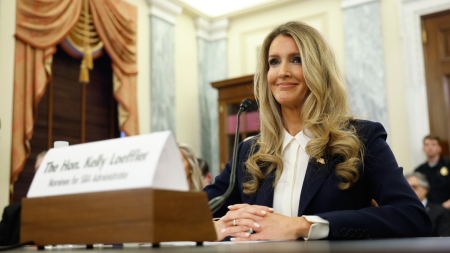Key takeaways
- The SBA has set definitions for a small business.
- To qualify for SBA funding and resources, you must meet their requirements to be considered a small business.
- Other types of lenders and funding may also follow the SBA’s definition of a small business.
The U.S. Small Business Administration (SBA) awards grants and backs loans for small businesses that meet certain criteria. The department is also responsible for awarding government contracts. To be eligible for SBA programs, your company must meet the SBA definition of a small business.
While non-SBA standards for a small business may differ — some lenders, for instance, may only require that you be for-profit and have under 500 employees — the SBA has very specific rules. Other institutions have adopted the same standards. The CDC, for instance, uses SBA standards to award government contracts.
SBA definition of a small business
The SBA primarily defines a small business by the number of employees, other size standards or annual receipts, depending on industry.
- Employee calculations. The SBA considers the average number of people, including full-time and part-time employees, on a business’s payroll within the last 24 calendar months. The maximum number of employees allowed depends on the industry. For instance, a dog and cat food manufacturer can have up to 1,250 employees and be considered a small business, while a retail bakery can only have 500 employees.
- Annual receipt calculations. This figure represents a business’s gross income minus the cost of goods sold. The figure is averaged over three to five years. If the business hasn’t been in business that long, the SBA will consider the weekly revenue averaged across one year. Again, the size standard varies by industry. The maximum annual receipt total could be a few million dollars or more than $20 million. For comparison, the cap for strawberry farmers is $5.5 million, while farm product warehouses and storage can have $34 million in annual average receipts.
- For-profit. To qualify as a small business by the SBA, your company must also be for-profit. Charities or nonprofits don’t qualify.
- Independently owned and operated. The business must be independently owned and operated, not owned by a parent organization with more resources.
- Located and operating in the U.S. A business must also be physically located in the United States or a U.S. territory. Your business operations must also be in the U.S. A post office box won’t cut it.
Bankrate insight
Classifying your small business as an LLC or Corporation is different from the SBA size classification. LLCs and Corporations refer to the type of business entity you have. The SBA size definition isn’t affected by your type of business entity, but becoming an LLC or Corporation can offer tax benefits and legal protection.
Small business definitions by industry
As mentioned above, business size standards vary by industry. Whether your business is judged by employee count or annual receipts will specifically depend on the North American Industry Classification System (NAICS) code it has been assigned. It’s important to know your NAICS code because you’ll need to supply it when you apply for an SBA-backed loan or government contract on SAM.
Here are some NAICS codes and the associated size standards not to be exceeded for common industries:
- Used Car Dealers (441120), $30.5 million
- Beer, Wine, and Liquor Retailers (445320), $10 million
- Radio Broadcasting Stations (516110), $47.0 million
- Book Publishers (513130), 1,000 employees
- Couriers and Express Delivery Services (492110), 1,500 employees
- Farm Supplies Merchant Wholesalers (424910), 200 employees
You can see the full list of industry codes on the SBA Table of Small Business Size Standards.
How to qualify as a small business
If you already have your revenue or employee averages, you can figure out if you qualify as a small business by SBA standards in just a few minutes.
- Go to the SBA Table of Small Business Size Standards and get your NAICS code. You will see the maximum number of employees or annual receipts restrictions in the right two columns.
- If you don’t already have your averages, calculate your average employees over two years or receipts over three years. You will only need the figure that is applicable to the standard applied to your industry. For instance, beer and ale wholesalers only need to present their employee number count.
- Use the SBA Size Standard Tool to enter your NAICS code and calculations.
- The tool will let you know if you qualify as a small business under SBA standards.
Advantages of SBA small business classification
There are several key benefits of qualifying as a small business. Many have to do with funding future projects for your company, but your small business may also find new revenue streams if you are approved for classification under the SBA.
SBA loans
SBA loans are provided by private lenders but backed by the SBA. You must have exhausted other lending options to be approved, and you also need to be classified as a small business. You can use an SBA loan to improve your cash flow or fund a project that expands your operations.
Bankrate insight
You don’t need to meet the SBA definition of a small business in order to get a non-SBA small business loan. But different factors about your business like time in business and annual revenue will affect whether or not a specific lender will approve you. If you’re a startup business, you may want to research lenders that approve business loans for startups.
Government grants and contracts
Organizations classified as small businesses may also compete for certain government grants and contracts. For instance, the SBA 8(a) program awards contracts for government projects to disadvantaged small businesses.
USDA loans
While the U.S. Department of Agriculture operates its own loan programs, meeting SBA standards may improve your chances of getting certain small business loans for rural business owners. For instance, the Rural Energy for America Program requires applicants to qualify as a small business by SBA standards.
Tax incentives
You may qualify for regional tax credits offered to small businesses. Many small businesses can also get health insurance tax cuts that make providing insurance to employees more affordable.
SBA resources
Meeting SBA standards also grants access to a variety of resources. For instance, you may take advantage of regional Small Business Development Centers for training and counseling about responsibly scaling your business.
The bottom line
To receive government contracts or loans, you must meet the government’s small business size standards. The SBA assigns a size standard to different industries either by annual gross receipts or by number of employees. The SBA lists its size standards in its Table of Small Business Size Standards to help define the standard for each industry.
Meeting SBA size standards can help you get funding, a grant or a government contract. Checking your industry’s size standard is a good start. However, you may have to meet additional requirements for funding, such as being a for-profit business and meeting a lender’s credit and revenue requirements.
Frequently asked questions
Read the full article here










